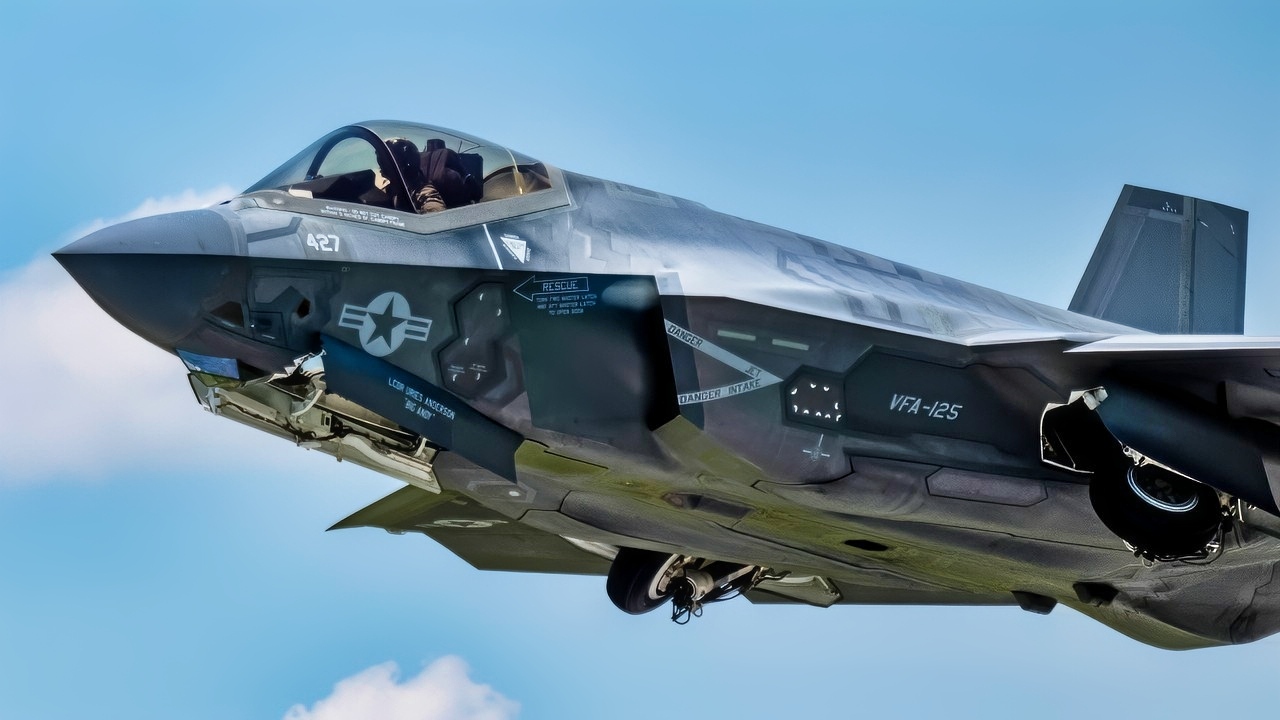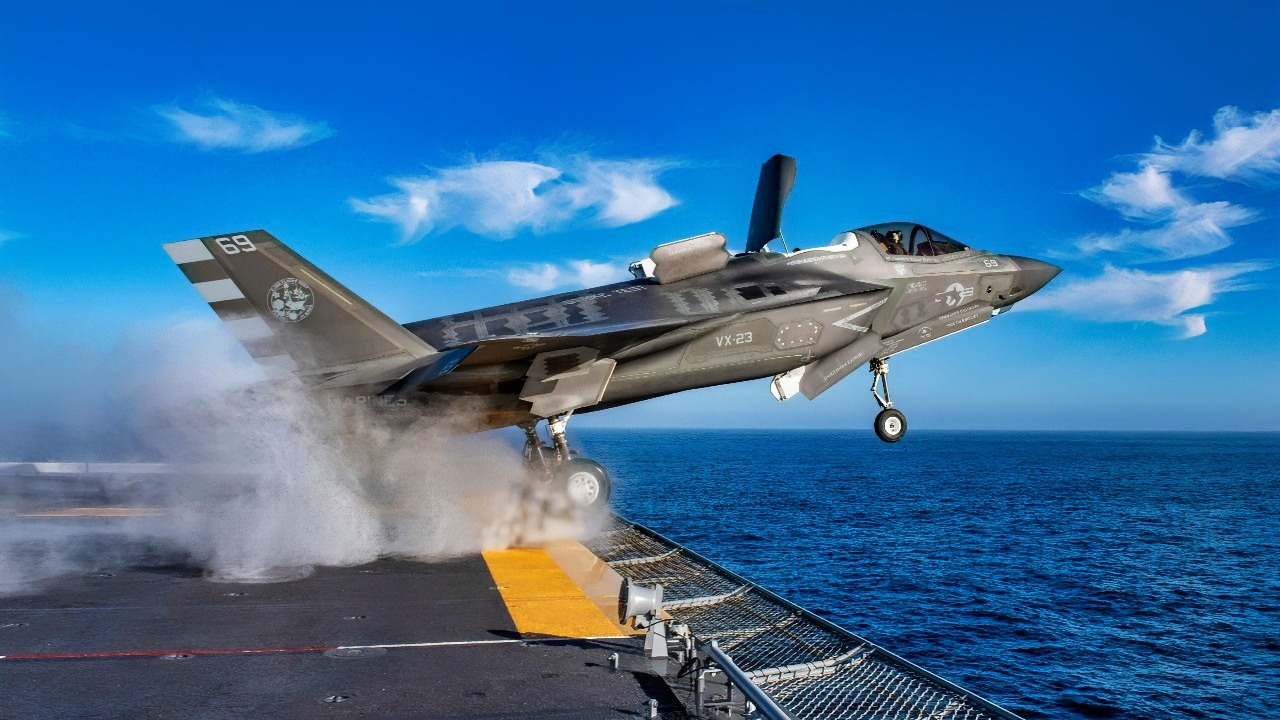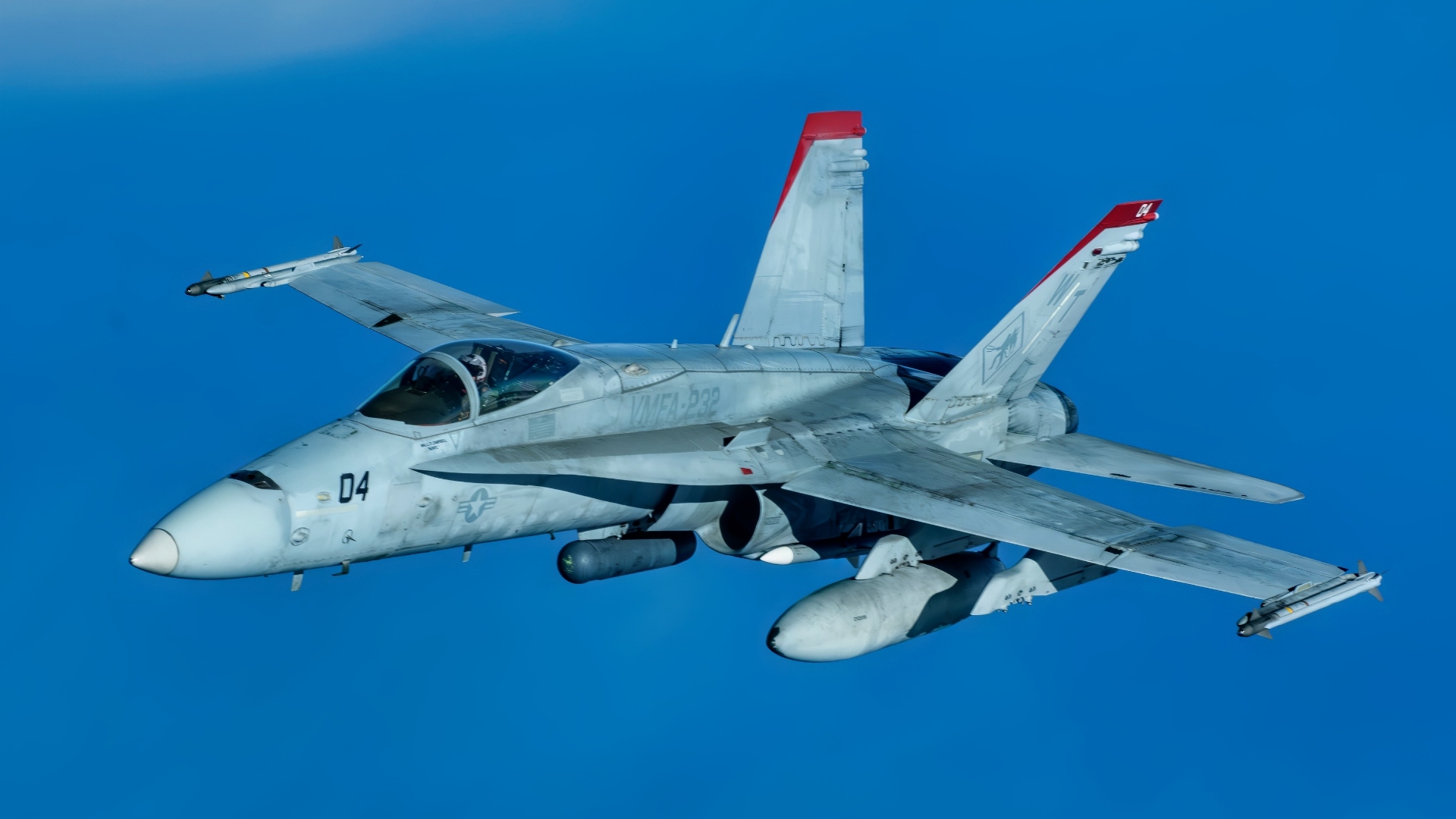Key Points and Summary – Born from a 1970s push for an affordable, carrier-ready multirole jet, the F/A-18 Hornet replaced Navy Phantoms and Intruders and became the Marines’ everyday striker.
-It fused reliable twin engines, robust carrier gear, and simple maintenance with sensors good enough to fight and bomb on the same sortie.
-From Libya and the Gulf War to the Balkans, Iraq, Afghanistan, and Syria, Hornets proved adaptable, precise, and available.
-Structural and avionics upgrades extended service life and sharpened weapons.
-The Navy has now retired its legacy Hornets in favor of Super Hornets and F-35Cs; the Marines are phasing theirs out more slowly as F-35s arrive.
F/A-18 Hornet: Why the Navy and Marines Chose a “Good Enough” Jet—and Made It Great
By the mid-1970s, the U.S. Navy needed to replace two very different airplanes: the F-4 Phantom II air-to-air bruiser and the A-7 Corsair II light attack stalwart. The Marines, meanwhile, wanted a rugged, multirole fighter that could support Marines ashore from land bases or carriers and wouldn’t devour maintenance hours. Budgets were tight, the fleet was aging, and new Soviet air defenses were spreading. A single type that could fight and strike, launch from a carrier, and be cheap enough to buy in numbers was the only politically viable path.
That logic birthed the Hornet’s core idea: “F/A” from day one. Instead of fielding separate types for fighters and bombers, the Navy and Marine Corps would buy one airplane with the cockpit, radar, and wiring to do both—and do them on the same sortie. The Air Force had walked away from the YF-17 lightweight fighter; the Navy picked up that design language and navalized it. In hindsight, it was an inspired bit of thrift: take a nimble twin-engine concept, add carrier bones, and grow it into a dependable fleet truck that still punched.
Origin Story for F/A-18: From YF-17 Roots to a Deck-Ready Multirole Jet
Navalizing an Air Force prototype is never trivial. Carrier flying punishes weak links, so the Hornet’s transformation focused on strength, control, and maintainability. Engineers reinforced the fuselage and landing gear for catapults and arrested landings, added a beefy tailhook, designed a folding wing that could take repeated deck abuse, and built in generous access panels so sailors could swap line-replaceable units in minutes, not hours. The two-crew D-model would later give Marines a flexible platform for complex strike and training, while single-seat A and C models kept weight down for day-to-day fleet work.
Crucially, the F/A-18 Hornet’s avionics were conceived as modular. That choice didn’t read glamorous in brochures, but it paid dividends for forty years: new radars, targeting pods, jammers, and weapons could be grafted on without redesigning the entire jet. The Hornet’s underlying philosophy was simple: make it easy to own. The Navy accepted “very good” climb and dash in exchange for “excellent” reliability, deck handling, and turnaround time.
Design Goals: Multirole, Maintainable, and Unfussy
Three traits defined the airplane from the start:
Twin engines, small footprint. Two compact turbines meant redundancy over water and at low altitude; the compact airframe saved deck space and eased taxi choreography.
Pilot-friendly sensors. A capable pulse-Doppler radar for look-down air-to-air work, and later upgrades that added mapping and precision air-to-ground modes; easy weapon selection; intuitive HOTAS controls.
Carrier toughness and easy upkeep. Forgiving handling around the boat, strong landing gear, corrosion control, and quick turnarounds. The Hornet’s maintainers could reach what mattered, which matters more than any brochure statistic in wartime.
That blend turned out to be the sweet spot. The Hornet was not the fastest or the longest-legged jet in the fleet; it was the one that showed up day after day with systems working and spare parts on the shelf.

U.S. Navy Aviation Boatswain’s Mate Aircraft Handling 2nd Class Kyle Darmanin, from Mooresville, North Carolina, assigned to air department’s flight deck crash and salvage division, signals an F/A-18E Super Hornet, attached to Strike Fighter Squadron (VFA) 27, on the flight deck of Nimitz-class aircraft carrier USS George Washington (CVN 73) while underway in the Timor Sea in support of Talisman Sabre 2025, July 14, 2025. Talisman Sabre is the largest bilateral military exercise between Australia and the United States advancing a free and open Indo-Pacific by strengthening relationships and interoperability among key allies and partners, while enhancing our collective capabilities to respond to a wide array of potential security concerns. (U.S. Navy photo by Mass Communication Specialist 2nd Class Tyler Crowley)
Cost and Procurement: Buying an Air Wing’s Backbone
Cost drove almost every early decision. The Navy could not afford bespoke, gold-plated fighters and attack jets in separate production lines. The Hornet was the budget’s compromise: buying one type to replace two, training fewer specialties, and consolidating logistics. Over time, that choice amplified savings—every new radar, weapon, or pod could be bought once and pushed across the fleet. Pilots converted faster; maintainers became experts; sortie generation improved because common jets share common problems and common fixes.
Operational Rollout: A Jet That Learned by Doing
Hornets began replacing Phantoms and A-7s in the early 1980s, first in Marine squadrons and then across carrier air wings. From the outset, they flew swing-role: launch on combat air patrol, get re-tasked to drop precision weapons, then return to CAP—all on a single cruise. The airplane’s reliability built trust in the ready room. If a carrier had to surge sorties through bad weather or at awkward hours, the air boss knew Hornets would be the backbone of the plan simply because they started, launched, and recovered without fuss.
At War: Libya, the Gulf, the Balkans, and Beyond
The Hornet’s combat résumé spans four decades and almost every kind of mission short of nuclear strike.
Libya, 1980s. Early combat saw F/A-18 Hornets escorting and striking in contested airspace over the Gulf of Sidra. The airplane’s radar modes and short-to-medium-range missiles gave it credible self-defense while performing attack tasks.
Desert Storm, 1991. The jet’s defining debut. Hornets carried precision weapons to airfields and command nodes, suppressed air defenses, and still kept AIM-9s and AIM-7s on the rails for self-escort. The revelation was how repeatable that performance was—day after day, jet after jet.
Balkans, late 1990s. Complex rules of engagement, mobile SAMs, and urban targets demanded flexible, precise airplanes. Hornets used targeting pods and GPS-aided weapons to hit fleeting targets without excessive collateral damage.
Iraq and Afghanistan, 2000s. The aircraft became the everyday tool of close air support and time-sensitive strikes. Marines in the fight knew that a Hornet overhead could carry the right mix—laser-guided bombs, JDAMs, and later small-diameter weapons—to solve different problems as a ground battle unfolded.
Syria and the broader Middle East, 2010s. Long-range strikes from carrier decks and expeditionary land bases reinforced the type’s core virtue: availability. If a strike window opened, Hornets made the time-on-target.
Across these campaigns, the airplane’s greatest contribution wasn’t a headline shoot-down or a single spectacular raid; it was the aggregate effect of thousands of precise, on-time sorties that shaped the battlefield and saved lives.
F/A-18 Hornet Lessons Learned: What Four Decades Taught the Fleet
The Hornet’s history hardened a handful of truths that influenced every Navy and Marine aircraft that followed:
Multirole done right reduces risk. When a single type can defend itself and strike accurately, fewer sorties are required to achieve effects—and fewer aircraft are exposed to threats.
Maintenance wins wars. The Hornet’s design for access and modular avionics translated into high mission-capable rates. The most exquisite sensor is useless on a jet that can’t launch.
Sensor fusion is more than a buzzword. Even before modern “fusion” computers, pilots and WSOs learned to blend radar, targeting pod, and INS/GPS cues into a coherent picture. That cockpit habit foreshadowed the fifth-generation approach to information.
Range still matters. The Hornet’s relatively short legs (versus bigger fighters) forced careful tanker planning and eventually spurred tactics and upgrades to stretch endurance. The lesson landed: if you can add fuel and efficiency, do it.
Hardware Evolution: From A/B to C/D and Far Beyond
The airplane the Navy retired was not the one it bought in the early 1980s. Over the years, legacy Hornets received:
Better radars and displays. The jump from early sets to modernized pulse-Doppler with higher reliability and improved mapping made true all-weather attack routine, not aspirational.
Targeting pods. Laser designation and, later, high-resolution infrared imagery gave crews the ability to identify and hit targets through smoke, dust, and darkness.
Electronic warfare. Successive jammer and receiver fits helped Hornets survive in more contested SAM environments.
Weapons integration. From “dumb iron” and Paveway to JDAM, JSOW, Small Diameter Bomb, and smarter air-to-air missiles, the jet’s pylons hosted the full evolution of precision airpower.
Life-extension and inspections. Structural work and careful depot inspections pushed many airframes toward 10,000-hour lifetimes, keeping fleets viable while new jets matured.
The Marines, in particular, went further late in the game—adding new processors and, in select jets, more modern radars—to wring additional relevance from airframes that still had hours left.
Money and Sustainment: The Hidden Strength
What kept the F/A-18 Hornet in front-line service for so long wasn’t only how it fought—it was how it fit budgets and depots. The Navy and Marines could buy spares in bulk, train maintainers across services, and shuffle jets between squadrons without exotic requalification. That kind of interchangeability became a strategic asset: during surge operations, the limiting factor wasn’t the jet’s exotic needs—it was fuel and pilots.
The Navy’s Retirement: Why “Legacy” Hornets Finally Left the Deck
By the late 2010s, the Navy’s “legacy” F/A-18A/C/D fleet had simply run the course. Airframe hours were high, corrosion was a constant fight, and the demands of modern sensors and weapons were running up against the electrical and cooling margins of a 1970s design. The fleet’s answer was twofold:
Shift to the Super Hornet (F/A-18E/F) as the day-to-day strike fighter. It looks like a Hornet but is a larger, newer, more powerful airplane with more fuel, more growth margin, and a modern sustainment base.
Bring on the F-35C to penetrate and sense in threat rings where fourth-generation jets are survivable only with great effort and support.

U.S. Navy Lt. Dave Hinkle, F-35C Lightning II Demonstration Pilot, performs during the 2021 Atlanta Air Show, Atlanta Regional Airport-Falcon Field, Ga., May 23, 2021. The U.S. Navy and Marine Corps’ carrier variant has larger wings and more robust landing gear than the other F-35 variants, making it suitable for catapult launches and fly-in arrestments aboard naval aircraft carriers. (U.S. Air Force photo by Staff Sergeant Thomas Barley)
The last Navy legacy F/A-18 Hornet squadrons marked their sundown ceremonies years ago, and flight demonstration teams moved on as well. On carrier decks today, the Hornet’s spiritual successors are Super Hornets and F-35Cs, often flying together—one type carrying mass, the other carrying stealth and sensors.
The Marine Corps Approach: Slower Sunset, Same Destination
Marines have different math. The Corps fights from expeditionary bases and needs a mix of jets that can operate from short, rough runways or from ships. That’s why the Marine Corps path pivots to F-35B (short takeoff/vertical landing) and F-35C, but on a measured timeline. To avoid a gap in aviation support to Marines on the ground, the Corps has extended the life of selected F/A-18C/Ds, upgrading where it was cheap and safe to do so and accepting that the airframes will serve into the early 2030s in diminishing numbers.

A joint team consisting of F-35 Patuxent River Integrated Test Force flight test members, U.S. Sailors and Marines, and the crew of the Japan Maritime Self-Defense Force Izumo-class multi-functional destroyer JS Kaga (DDH-184) are executing developmental sea trials in the eastern Pacific Ocean to gather the necessary data to certify F-35B Lightning II short takeoff and vertical landing aircraft operations. While aboard the MSDF’s largest ship, the Pax ITF flight test team has been gathering compatibility data for analysis in order to make recommendations for future F-35B operational envelopes, further enhancing the Japanese navy’s capabilities. The results of the testing will contribute to improved interoperability between Japan and the United States, strengthening the deterrence and response capabilities of the Japan-U.S. alliance and contributing to peace and stability in the Indo-Pacific region. Japan is an F-35 Joint Program Office foreign military sales customer planning to purchase 42 F-35Bs. The F-35 Joint Program Office continues to develop, produce, and sustain the F-35 Air System to fulfill its mandate to deliver a capable, available, and affordable air system with fifth-generation capabilities.
This approach is classic Marine pragmatism: transition as fast as the new jets and training pipelines allow, but never at the cost of the close-air-support and interdiction missions that Marines rely on in crisis.
What the Hornet Proved in Combat—and in Culture
If you strip away the nostalgia, the Hornet’s legacy is twofold.
First, it normalized multirole as the baseline. After the Hornet, the Navy and Marines never looked back to a world of separate “fighter” and “attack” communities. That shift simplified training, streamlined logistics, and made carrier air wings far more flexible.
Second, it proved that availability is a weapon. An airplane that is almost always ready, easy to fuel and arm, and simple to fly within limits will, over time, change the outcome of wars more than a diva that wins in a brochure. The Hornet didn’t have to be the best at everything. It had to be good at everything, always. And it was.
A Few Myths, Revisited
“Too short-legged to matter.” Range was a constraint—but planning tankers and evolving weapons turned the Hornet into a long-reach striker when crews needed it to be.
“A compromise fighter.” In many air-to-air set-ups the Hornet’s instantaneous turn, carefree handling, and high-alpha control made it more than a match—especially in the hands of pilots who knew how to manage energy.
“Obsolete the day it entered service.” Four decades of upgrades and combat realities say otherwise. The jet adapted faster than its critics predicted because it was designed to adapt.
The Endgame and the Afterlife
With the Navy’s legacy Hornets retired and the Marines reducing theirs, the airplane enters its afterlife: training ranges, museum collections, and the living memory of maintainers and aircrew who grew up on its systems and procedures. Many allies still fly the type; the global spares and knowledge base means these jets will remain credible for years in air policing and regional defense roles.
On U.S. decks and ramps, the Hornet’s spirit survives in how air wings plan and fight. Super Hornets carry the multirole load with bigger lungs; F-35s sense and penetrate. Together, they execute a playbook the original F/A-18 wrote: put the right sensors and weapons on a jet that will always be there when you need it.
Final Appraisal on the F/A-18: The Workhorse That Taught the Fleet to Be Flexible
The Navy and Marines didn’t choose the Hornet because it was exotic; they chose it because it was right—for budgets, for decks, for the kind of wars America actually fights. It answered a simple question that still matters: can you make a fighter that strikes and a striker that fights? The F/A-18 proved you can, and that doing so buys options commanders don’t otherwise have.

An F/A-18C Hornet, assigned to the “Stingers” of Strike Fighter Squadron 113, transits over the haze of southern Afghanistan. VFA 113, part of Carrier Air Wing 14 aboard the aircraft carrier USS Ronald Reagan is supporting Operation Enduring Freedom. The mission of CVW 14 is to protect the people of Afghanistan and to support coalition forces. Ronald Reagan is currently deployed to the U.S. 5th Fleet area of operations. Operations in the U.S. 5th Fleet area of operations are focused on reassuring regional partners of the United States’ commitment to security, which promotes stability and global prosperity.
That’s why, even as the Navy flies on without it and the Marines wind down their last squadrons, the Hornet remains a standard. It is the airplane that taught a generation how to blend roles, share tasks, and deliver effects from the sea and from austere land bases, night after night, with a reliability that changed campaigns.
Its retirement is not an epitaph. It’s a handoff.
About the Author: Harry J. Kazianis
Harry J. Kazianis (@Grecianformula) is Editor-In-Chief and President of National Security Journal. He was the former Senior Director of National Security Affairs at the Center for the National Interest (CFTNI), a foreign policy think tank founded by Richard Nixon based in Washington, DC. Harry has over a decade of experience in think tanks and national security publishing. His ideas have been published in the NY Times, The Washington Post, The Wall Street Journal, CNN, and many other outlets worldwide. He has held positions at CSIS, the Heritage Foundation, the University of Nottingham, and several other institutions related to national security research and studies. He is the former Executive Editor of the National Interest and the Diplomat. He holds a Master’s degree focusing on international affairs from Harvard University.
More Military
F-15E Strike Eagle Has Just 1 Mission
Russia’s Su-27 Flanker Fighter: Moscow’s Best Warplane Ever? You Decide
Iowa-Class Battleship USS Wisconsin Has a Message for the U.S. Navy
‘Apex Predator’: The Royal Navy’s New Astute-Class Submarine Is Quiet as ‘Baby Dolphin’
Aircraft Carrier USS Carl Vinson Has a Message for the U.S. Navy










